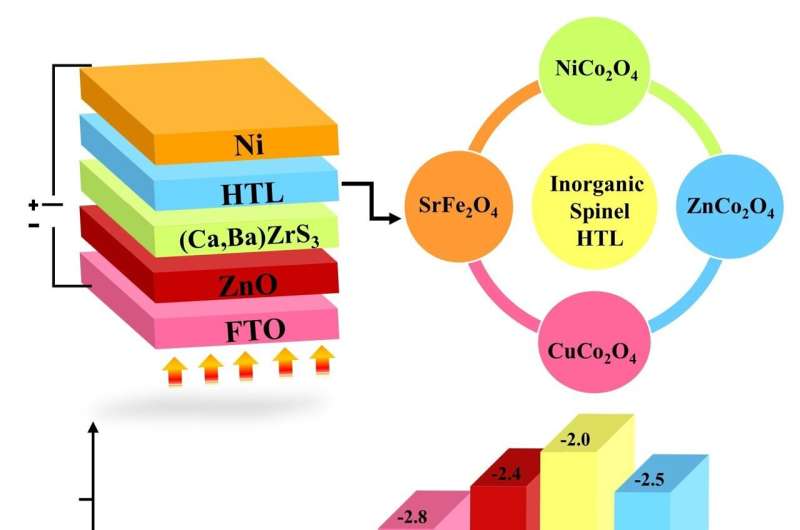A Mexican research team significantly leaps in solar technology, combining chalcogenide perovskites with next-gen inorganic materials to deliver ultra-efficient, stable, and eco-friendly photovoltaics.

In a development for clean energy, researchers from the Autonomous University of Querétaro have unveiled a promising solar cell architecture that blends sustainability with exceptional efficiency. The team’s work explores the use of (Ca,Ba)ZrS₃—a non-toxic chalcogenide perovskite—as the light-absorbing material, paired with cutting-edge inorganic spinel hole transport layers (HTLs).
Unlike conventional lead-based perovskites, it offers high thermal and chemical stability. With minimal calcium doping (under 2%), its bandgap can be tuned to 1.26 eV—close to the theoretical optimum for solar conversion efficiency.
The research team broke new ground by integrating spinel oxides—NiCo₂O₄, ZnCo₂O₄, CuCo₂O₄, and SrFe₂O₄—as HTLs and simulating their performance using the SCAPS-1D modelling tool. The result: solar cells with power conversion efficiencies (PCE) surpassing 34%, far exceeding benchmarks in thin-film photovoltaic research.
Among the tested materials, SrFe₂O₄ emerged as a standout, delivering a PCE of 34.24%, thanks to its strong recombination resistance, low energy loss (~0.11 V), and high short-circuit current (~34.12 mA/cm²). These improvements were driven by enhanced built-in potential, better band alignment, and deeper light absorption (~42%).
Spinel HTLs proved vastly superior to traditional organic options, offering lower resistivity, ease of synthesis, and robust thermal and environmental durability. Notably, the study emphasises the crucial role of interface engineering—reducing defect densities and optimising electronic band offsets to boost charge carrier flow and suppress recombination.
This research signals a pivotal shift in solar technology, pointing toward scalable, high-performance, and eco-friendly photovoltaics. As refinement continues, solar cells combined with spinel HTLs could become a cornerstone of next-generation renewable energy solutions.
References: Eupsy Navis Vincent Mercy et al., 2025, DOI: 10.1007/s11082-025-08228-7









